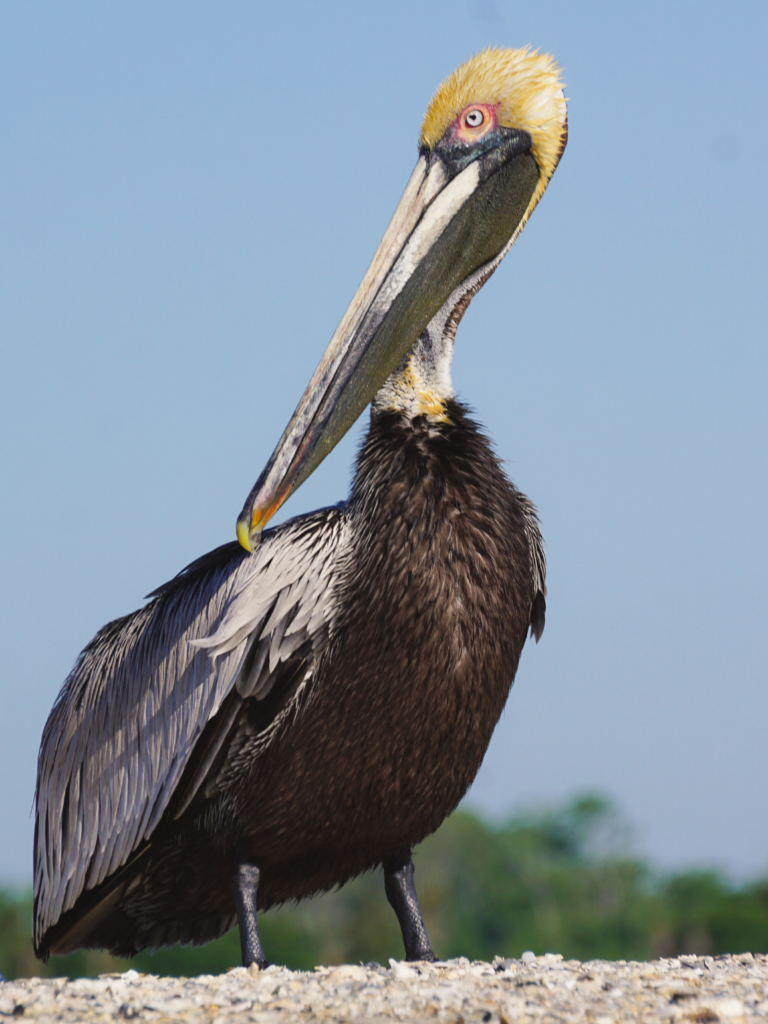Right in the heart of Charleston’s harbor lies a seabird sanctuary like no other. Just a short paddle from the mainland, wildlife enthusiasts can observe thousands of birds nesting and caring for their chicks. Affectionately known as Crab Bank, this island has even been known to host as many as 5,000 nest sites in just a single summer.
Kayaking Charleston’s Seabird Sanctuary
Crab Bank has proven to be one of South Carolina’s more prolific nesting sites for coastal birds. In fact, there are only five islands like it off the South Carolina coast. Researchers have observed fifteen different species of birds there including brown pelicans, royal terns, black skimmers, and American oystercatchers. Why do all these birds flock to Crab Bank? This island is naturally isolated from predators, like raccoons, creating a safe haven for birds to rest and raise their young.


Ecotour to Observe Charleston’s Seabird Sanctuary
Crab Bank is located right at the mouth of Shem Creek where it meets the Charleston Harbor. Because of its short distance from shore, visiting Crab Bank is a popular route for paddlers to discover. One local outfitter leading guided tours to the island is Coastal Expeditions. Their staff provides interpretation specific to the Crab Bank seabird sanctuary to ensure guests are educated while they kayak to this unique home. Our excursion began early in the morning at 8 am and entailed about two hours of paddling. Most guests used tandem kayaks, but there was the option for individuals to paddle their own craft. During our time with Coastal Expeditions, we were able to observe brown pelicans, black skimmers, diamondback terrapin, and even a passing pod of bottlenose dolphins. These family-friendly tours begin and end from the Coastal Expeditions flagship location in Mount Pleasant, South Carolina.
Protecting Crab Bank Seabird Sanctuary
Back in 2006, Crab Bank was designated as a seabird sanctuary to help protect the nesting bird species. This helped to reduce disturbance from people and their dogs exploring the sandy island. Oftentimes paddlers would unintentionally spook birds into flying off, leaving their eggs exposed in the scorching sun. Today people are no longer allowed on the island from March 15 through October 15, to help safeguard birds during their busy nesting season. Since becoming a seabird sanctuary, Crab Bank had seen a dramatic increase in bird populations. In just the first year of this designation, royal tern nests increased from about 300 sites to over 1,600 sites on the protected island.


Unfortunately, Crab Bank has also experienced the effects of climate change and severe weather. In 2017 Hurricane Irma washed away the remaining nesting ground, eroding potential nesting sites of thousands of birds. Viable areas to raise chicks dwindled so much that in 2019 there were zero nests on Crab Bank, a devastating loss of nesting sites for many bird species.
Through community engagement and support a plan was devised to help rebuild the banks and restore Crab Bank. With the help of the Army Corps of Engineers sand dredged during Charleston Harbor’s deepening project will be diverted to help rebuild the bank. They found compatible sand and developed a plan for the restoration of Crab Bank. Soon the sandy area will cover over 20 acres of quality nesting grounds for seabirds. And once again Crab Bank will host tens of thousands of nesting birds.
How Can You Help Protect Native Seabirds
Here are some simple actions that you can take to help protect native birds, and the delicate habitat they call home.
- Pack any trash or food you brought to the beach
- Stop people (kids too) from running and scaring birds to fly off
- Refrain from walking in areas that are blocked off for nesting birds
- Provide nesting birds like pelicans, terns, skimmers, and their chicks plenty of personal space
- Do not bring your dog to the beach if they are not allowed on the beach









